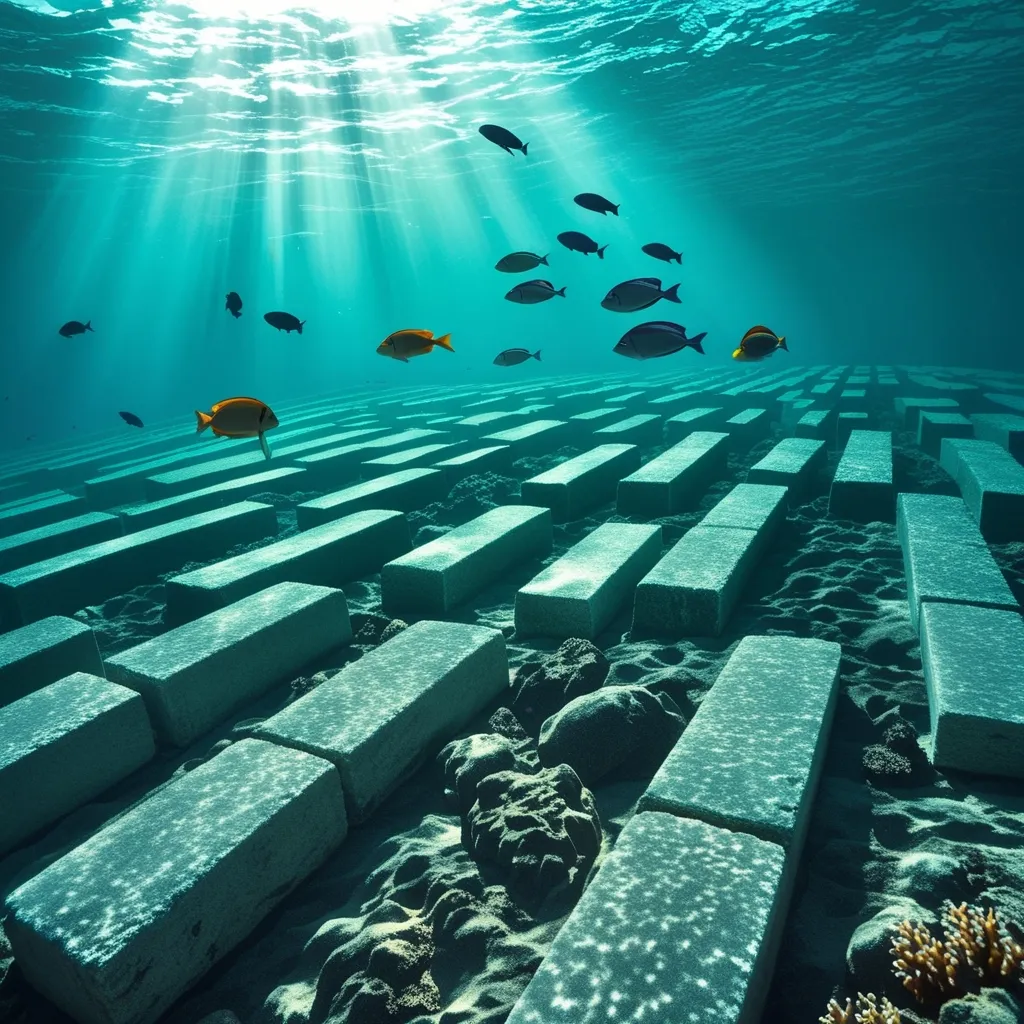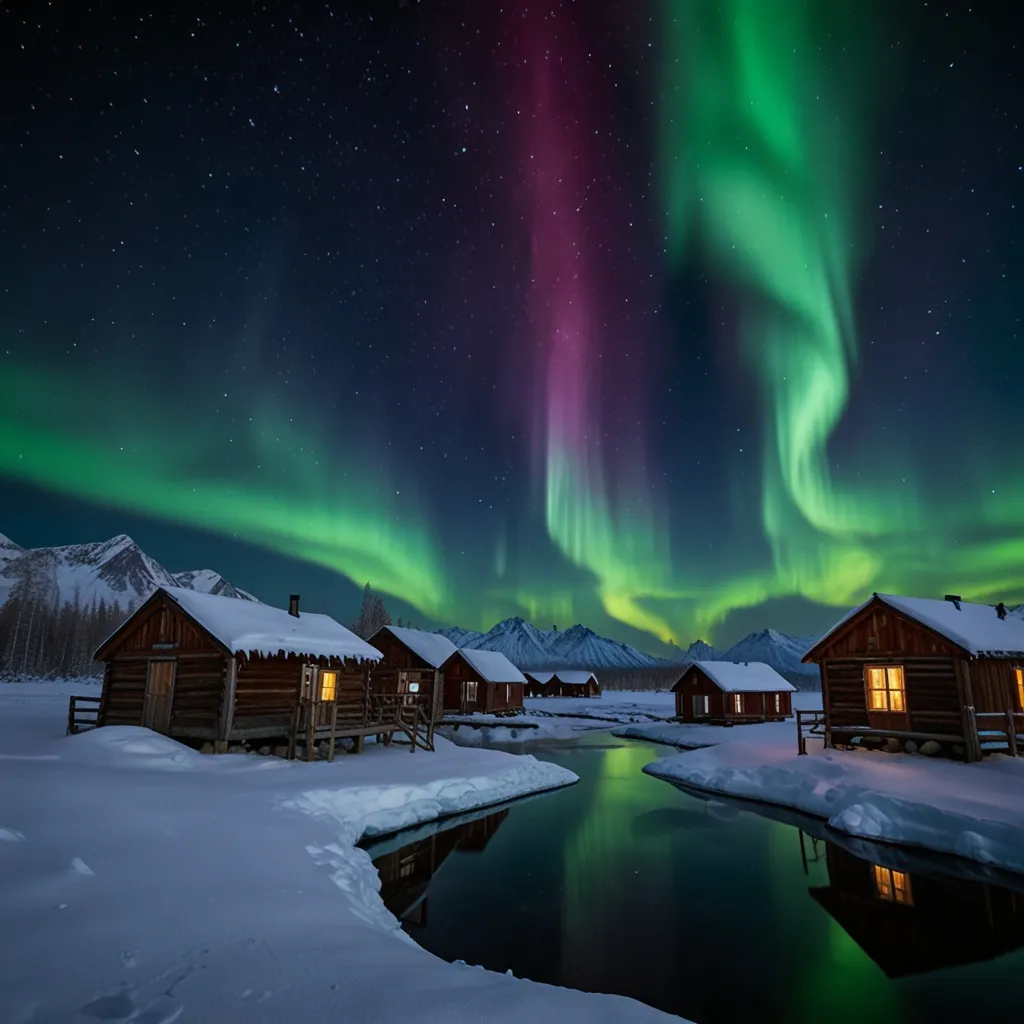Beneath the Waves: The Enigma of Bimini Road
Off the coast of North Bimini Island in the Bahamas, a mysterious underwater formation has been captivating imaginations for decades. Known as Bimini Road, this peculiar rock structure has sparked countless debates, theories, and wild speculations. Is it a remnant of the lost city of Atlantis, or simply a natural geological formation? Let’s dive in and explore this fascinating underwater enigma.
Picture this: you’re flying over the crystal-clear waters of the Bahamas, and suddenly you spot what looks like an ancient road submerged beneath the waves. That’s exactly what happened back in 1968 when a pilot first discovered Bimini Road. Talk about a jaw-dropping moment!
From above, the formation resembles a cobblestone street stretching across the ocean floor. It’s made up of rectangular limestone blocks that are so neatly arranged, you’d swear they were placed there by human hands. When divers first explored the site, they thought they were looking at one long, continuous rock. But as they got closer, they realized it was actually a bunch of smaller stones lined up in a neat formation. Nature sure has a way of fooling us sometimes!
Now, here’s where things get really interesting. Remember the legend of Atlantis? You know, that super-advanced civilization that supposedly existed thousands of years ago and then vanished without a trace? Well, some folks believe that Bimini Road might be a piece of that lost city. It’s like finding a piece of the world’s most elusive puzzle!
The Atlantis connection got a major boost from a guy named Edgar Cayce. He was known as the “Sleeping Prophet” because he’d make predictions while in a trance-like state. Back in the 1930s, Cayce said that parts of Atlantis, including some of its temples, would be discovered near Bimini around 1968 or 1969. When Bimini Road was found right around that time, people went nuts! It was like Cayce had a crystal ball or something.
But hold your seahorses, folks. Before we start planning our Atlantis vacation, let’s see what the scientists have to say about all this. Geologists have been studying Bimini Road for years, and most of them have come to a less exciting conclusion: it’s probably just a natural rock formation. I know, I know, it’s not as thrilling as a lost underwater city, but hear me out.
The rocks that make up Bimini Road are actually pretty young by geological standards - between 2,000 and 4,000 years old. That’s way too recent to be part of Atlantis, which supposedly existed around 11,000 years ago. Plus, scientists haven’t found any evidence of human construction at the site. It’s more likely that natural processes created this cool-looking formation.
Here’s how it probably went down: over time, natural rock joints fractured, creating these rectangular and polygon-shaped stones. Then, bands of sediment settled between the rocks, giving it that paved road look. It’s like Mother Nature decided to play a little trick on us!
But don’t worry, the story doesn’t end there. Even though scientists are pretty sure Bimini Road isn’t the lost city of Atlantis, that hasn’t stopped people from coming up with all sorts of wild theories. Take Graham Hancock, for example. He’s got this idea that Bimini Road might be evidence of a super-advanced civilization that existed during the last ice age. He even talks about it in his Netflix series “Ancient Apocalypse.”
Hancock’s theory goes something like this: a comet crashed into Earth and destroyed Atlantis, but some survivors managed to escape and spread their knowledge around the world. It’s like a Hollywood blockbuster plot, right? The problem is, there’s no real scientific evidence to back it up. In fact, many experts have criticized Hancock’s ideas for being more fiction than fact.
Here’s the thing: while these theories might sound exciting, they can actually be pretty harmful. They often downplay the achievements of ancient indigenous cultures and instead credit advanced knowledge to mythical ancestors. It’s like saying, “Nah, those pyramids couldn’t have been built by the local people. It must have been aliens or Atlanteans!” Not cool, right?
But you know what? Even if Bimini Road isn’t the lost city of Atlantis, it’s still an awesome place to visit. Imagine diving or snorkeling in those crystal-clear waters, floating above this mysterious formation. The water’s pretty shallow - only about 15 to 20 feet deep - so it’s perfect for both experienced divers and newbies. And hey, you might even spot some Atlantic dolphins swimming by!
The whole Bimini Road debate is a perfect example of how we humans love a good mystery. Even when science gives us a perfectly reasonable explanation, there’s a part of us that wants to believe in something more magical. It’s like we’re all kids again, dreaming of buried treasure and lost civilizations.
But here’s the cool part: you don’t need myths and legends to appreciate how amazing Bimini Road really is. Just think about it - natural processes created this incredible formation that looks so much like a man-made road, it’s fooled people for decades. Nature is the real magician here!
And let’s not forget about all the marine life that calls Bimini Road home. While we’re up here debating about lost civilizations, there’s a whole underwater world going about its business down there. Fish darting in and out of the rocks, corals slowly growing, maybe even a curious shark passing by. It’s like a bustling underwater city in its own right!
The fascination with Bimini Road is part of a bigger trend of people seeking out lost civilizations and trying to explain natural wonders through far-out theories. It’s human nature to want answers, to try and make sense of the world around us. But it’s important to keep our feet (or fins, in this case) on the ground and approach these mysteries with a critical eye.
That’s where the real scientists come in. Archaeologists and geologists are still studying sites like Bimini Road, not just to debunk wild theories, but to understand how these formations came to be. Their work reminds us that the truth can be just as fascinating as any myth or legend.
So, what’s the takeaway from all this? Well, Bimini Road is a perfect example of how science and imagination can collide in the most interesting ways. It’s a place where geology meets mythology, where fact meets fiction. And in the end, it doesn’t really matter if it’s a lost city or a quirk of nature - it’s still an incredible sight to behold.
Next time you’re planning a beach vacation, why not consider a trip to Bimini? You can dive down to see Bimini Road for yourself, and who knows? Maybe you’ll spot something that all the scientists and explorers have missed. Just remember to keep an open mind, but also a healthy dose of skepticism.
In the meantime, let’s appreciate Bimini Road for what it is - a fascinating underwater formation that reminds us of the wonders that lie beneath the waves. Whether it’s a geological oddity or a remnant of an ancient civilization, it’s a testament to the mysteries our planet still holds. And isn’t that pretty cool in itself?
So, the next time someone brings up Bimini Road at a party (hey, it could happen!), you’ll be ready with all the facts and theories. Just maybe don’t mention the Atlantis thing unless you’re prepared for a long debate!






